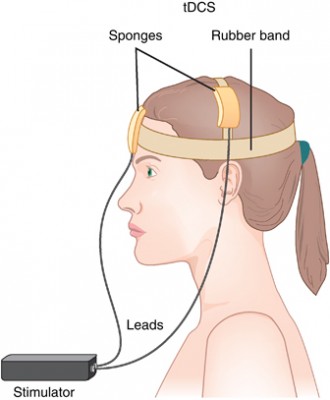Texans... here is the published pediatric list....
 |
Low 'THC Cannabis for Pediatric Neurology Disorders
|
The rule is published and effective 5 Dec 2019
§1.61. Incurable Neurodegenerative Diseases.
(a) An incurable neurodegenerative disease is a condition, injury, or illness:
(1) that occurs when nerve cells in the brain or peripheral nervous system lose function over time; and
(2) for which there is no known cure.
(b) A qualifying physician under Texas Occupations Code, Chapter 169, may prescribe low-THC cannabis to a patient with a documented diagnosis of one or more of the following incurable neurodegenerative diseases:
Incurable Neurodegenerative Diseases with Pediatric Onset:
(A)
Mitochondrial Conditions:
(i)
Kearn Sayers Syndrome;
(ii)
Mitochondrial Encephalopathy Ragged Red Fiber;
(iii)
Mitochondrial Encephalopathy Lactic Acidosis Stroke;
(iv)
Neuropathy, Ataxia, and Retinitis Pigmentosa;
(v)
Mitochondrial neurogastrointestinal encephalopathy;
(vi)
Polymerase G Related Disorders:
(I) Alpers-Huttenlodcher
syndrome;
(II)
Childhood Myocerebrohepatopathy spectrum;
(III)
Myoclonic epilepsy myopathy sensory ataxia; and
(IV)
Ataxia neuropathy spectrum;
(vii)
Subacute necrotizing encephalopathy, also known as Leigh syndrome;
(viii)
Respiratory chain disorders complex 1 through 4 defects: Co Q biosynthesis
defects;
(ix)
Thymidine Kinase;
(x)
Mitochondrial Depletion syndromes types 1 through 14:
(I) Deoxyguanisine kinase
deficiency;
(II)
SUCLG1-related mitochondrial DNA depletion syndrome, encephalmyopathic form
with methylmalonic aciduria; and
(III)
RRM2B-related mitochondrial disease.
(B)
Creatine Disorders:
(i)
Guanidinoacetate methytransferase deficiency;
(ii)
L-Arginine/glycine amidinotransferase deficiency; and
(iii)
Creatine Transporter Defect, also known as SLC 6A8.
(C)
Neurotransmitter defects:
(i)
Segawa Diease, also known as Dopamine Responsive Dystonia;
(ii)
Guanosine triphosphate cyclohydrolase deficiency;
(iii)
Aromatic L-amino acid decarboxylase deficiency;
(iv)
Monoamine oxidase deficiency;
(v)
Biopterin Defects:
(I)
Pyruvoyl-tetahydropterin synthase;
(I)
Sepiapterin reductase;
(III)
Dihydropteridine reductase; and
(IV)
Pterin-4-carbinolamine dehydratase.
(D)
Congenital Disorders of Glycosylation.
(E)
Lysosomal Storage Diseases:
(i)
Mucopolysaccaridosis:
(I)
Mucopolysaccharidosis Type I, also known as Hurler Syndrome or Scheie Syndrome;
(II)
Mucopolysaccharidosis Type II, also known as Hunter Syndrome;
(III)
Mucopolysaccharidosis Type III, also known as Sanfilippo A and B; and
(IV)
Mucopolysaccharidosis Type IV, also known as Maroteaux-Lamy; and
(V)
Mucopolysaccharidosis Type VII, also known as Sly.
(ii)
Oligosaccharidoses:
(I)
Mannosidosis;
(II)
Alpha-fucosidosis;
(III)
Galactosialidosis;
(IV)
Asparylglucosaminuria;
(V)
Schindler; and
(VI)
Sialidosis;
(iii)
Mucolipidoses:
(I)
Mucolipidoses Type II, also known as Inclusion Cell disease; and
(II)
Mucolipidoses Type III, also known as pseudo-Hurler polydystrophy;
(iv)
Sphingolipidoses:
(I)
Gaucher Type 2 and Type 3;
(II) Neimann Pick Type A and B;
(III)
Neimann Pick Type C;
(IV)
Krabbe;
(V)
GM1 gangliosidosis;
(VI)
GM2 gangliosidosis also known as Tay-sachs and Sandhoff Disease;
(VII)
Metachromatic leukodystrophy;
(VIII)
Neuronal ceroid lipofuscinosis types 1-10 including Batten Disease; and
(IX)
Farber Disease; and
(v)
Glycogen Storage-Lysosomal: Pompe Disease.
(F)
Peroxisomal Disorders:
(i)
X-linked adrenoleukodystrophy;
(ii)
Peroxisomal biosynthesis defects:
(I)
Zellweger syndrome:
(II) Neonatal
Adrenoleukodystrophy; and
(iii)
D Bidirectional enzyme deficiency.
(G)
Leukodystrophy:
(i)
Canavan disease;
(ii)
Pelizaeus-Merzbacher disease;
(iii)
Alexander disease;
(iv)
Multiple Sulfatase deficiency;
(v)
Polyol disorders;
(vi)
Glycine encephalopathy, also known as non-ketotic hyperglycinemia;
(vii)
Maple Syrup Urine Disease;
(viii)
Homocysteine re-methylation defects;
(ix)
Methylenetetrahydrofolate reductase deficiency severe variant;
(x)
L-2-hydroxyglutaric aciduria;
(xi)
Glutaric acidemia type 1;
(xii)
3-hydroxy-3-methylglutaryl-CoA lyase deficiency;
(xiii)
Galactosemia;
(xiv)
Manosidosis alpha and beta;
(xv)
Salidosis;
(xvi)
Peripheral neuropathy types 1 through 4;
(xvii)
Pyruvate Dehydrogenase Deficiency;
(xviii)
Pyruvate Carboxylase Deficiency;
(xix)
Refsum Disease; and
(xx)
Cerebral
Autosomal Dominant Arteriopathy with Sub-cortical Infarcts and
Leukoencephalopathy.
(H)
Fatty Acid Oxidation:
(i)
Trifunctional protein deficiency; and
(ii)
Long-chain L-3 hydroxyacyl-CoA dehydrogenase deficiency.
(I)
Metal Metabolism:
(i)
Wilson Disease;
(ii)
Pantothenate Kinase Associated Neurodegeneration; and
(iii)
Neurodegeneration with brain iron accumulation.
(J)
Purine and Pyrimidine Defects:
(i)
Adenylosuccinate synthase Deficiency;
(ii)
5-aminoimidazole-4-carboxamide ribonucleotide transformylase deficiency;
(iii)
Hypoxanthine-guanine phosophoribosyltransferase Deficiency also known as
Lesch-Nyhan disease;
(iv)
Dihydropyrimidine dehydrogenase Deficiency; and
(v)
Dihydropirimidinase Deficiency.
A treating physician of a patient suffering from an incurable
neurodegenerative disease not listed in subsection (b) of this section may
submit a request to the department to have a disease added.
(e) After review of
the submitted documentation, the department may request additional information
or make a determination.




